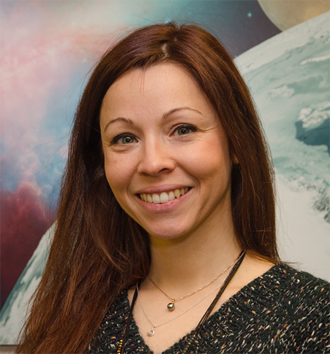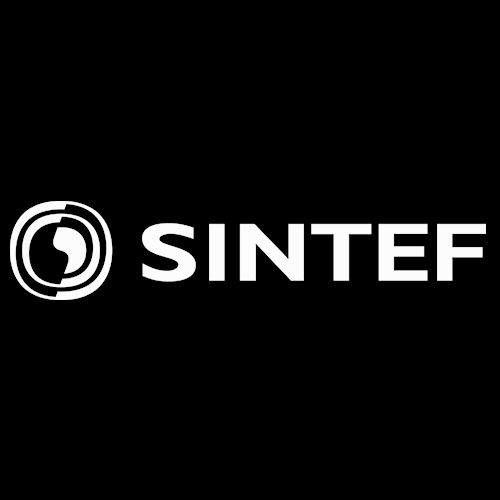2021
Hans Munthe-Kaas
Symmetri - 12.03.2021
Symmetri er et begrep som er dypt forankret i kunst, i naturen og i matematikken. I hverdagsspråk hentyder ‘symmetri’ på en følelse av harmoni, vakre proporsjoner og balanse. I matematikken er ‘symmetri’ mer presist definert som invarians av et objekt under en transformasjon. For eksempel, et ansikt er ganske symmetrisk fordi det ser omtrent likt ut når det speilvendes. En fotball laget av femkanter og sekskanter har 60 rotasjonssymmetrier, og 120 symmetrier om vi også tar med speilinger. Det matematiske språket for å beskrive symmetrier kalles Gruppeteori. Dette er et felt der norske matematikere har utmerket seg! Niels Henrik Abel, Sophus Lie, Ludwig Sylow og Ernst Selmer har alle fått sine navn knyttet til sentrale tema i gruppeteori.
Tom Crawford
Equations Stripped - Navier-Stokes - 12.03.2021
The Navier-Stokes equations model the flow of every fluid on Earth, but yet we know very little about them. So little in fact, there is currently a $1 million prize for anyone that can help to improve our understanding of how these fascinating equations work. In this talk, Dr Tom Crawford will strip back the Navier-Stokes equations (and himself) layer-by-layer as he explains them in a way that everyone can understand… Based on Tom’s hit YouTube series ‘Equations Stripped’ and his Numberphile trilogy on Fluid Dynamics.
IBM
Utviklingen av Quantum Computing fra prinsipp til anvendelig teknologi - 12.03.2021
Jane Luu
The Edge of Our Planetary System - 11.03.2021
Your parents and grandparents were most likely taught that our planetary system ended at Pluto, but our discovery of Kuiper Belt in 1992 changed all that. The Kuiper Belt is a large population of icy bodies left over from the formation of the planets — the unused material, so to speak. The discovery changed how we viewed our solar system, how we viewed other solar systems, and even clarified the nature of Pluto. This talk will describe the discovery process. I would like the talk to be interactive, so I will ask participants how they themselves would solve various problems if they were looking for the edge of the planetary system.
Steinar Stapnes - CERN
CERN - small particles and big instruments - 11.03.2021
The structure of matter, fundamental forces and the evolution of our universe are primarily studied in accelerators and with a wide range of astroparticle and astronomical observations. All of these studies are organised as large international projects bringing together the best universities, laboratories and technologies world-wide to build very advanced, and usually large, instruments to perform the necessary measurements. In spite of enormous progress over the last 50 years dark matter and energy, dominating our universe, are still unknowns, and quantum physics and general relativity are still at odds with each other. The focus will be on studies made within experimental particle physics in projects at CERN and in similar accelerator laboratories in the US, China and Japan.
This lecture shows how such studies are made, explores the close links between new technology and progress in fundamental physics, and gives examples of some of the projects underway or planned.
The role of the Norwegian researchers in this field will be mentioned, and how students at Norwegian universities can participate and spend time for example at CERN during their studies.
Norsk Romsenter
Norge i rommet - 11.03.2021
Visste du at NASA-kjøretøyet Perseverance som landet nylig på Mars har norsk teknologi installert på seg? I dette foredraget ser vi på Norges rolle i utforskningen av verdensrommet.
Sara Faggi - NASA
Comets: A four billion year travel in the past, hunting the origin of life - 10.03.2021
The importance of studying water and organic molecules is related to their biological relevance. The origin of water oceans and pre-biotic organic molecules on Earth, and the origin of an ancient ocean on Mars, is unsolved. Even today the bulk Earth is cosmically dry (poor in hydrogen, relative to the protoplanetary disk). About 60 Ma after Earth-accretion, the moon-forming impact probably removed any water that may have outgassed after core formation, leaving the Hadean Earth water-poor at its surface. How did terrestrial planets acquire their water? Bombardments of Earth and Mars by icy and rocky planetesimals (represented today by comet nuclei and asteroids) were common from their formation through the Late Heavy Bombardment. Because water is the most abundant native ice in cometary nuclei, with the aggregate of organic ices comprising a close seconds, we want to understand the role primitive bodies played in delivering water and pre-biotic organics to the young inner planets.
Roger Antonsen
Frå matematiske visualiseringar til algoritmisk kunst - 10.03.2021
I dette lekne, fargerike og spennende foredraget får du høre om hvordan abstrakte, matematiske objekter kan visualiseres og konkretiseres og hva algoritmisk kunst er. Roger forteller om sine siste eksperimenter med 3D-printing av kortstokking, laserskjæring av keltiske knuter, labyrinter av speil, sirkelpakking og kreativ programmering. Kom og hør om hvordan matematikk kan oppleves på nye og originale måter!
Bearing Point
Datadrevet vedlikehold på skinner - fra sensordata til algoritmer - 10.03.2021
I dette foredraget deler BearingPoints Data & Analytics team sammen med Bane NOR reisen fra innhenting av store mengder sensordata fra jernbanen, til fysikk og algoritmer for å forbedre og effektivisere vedlikeholdet av jernbaneinfrastrukturen.
Kristian Seip
Riemann-hypotesen - hva handler den egentlig om? - 09.03.2021
Vi skal se litt på hva matematikkens største uløste problem handler om. Vi skal ta noen sveip gjennom historien, fra Euler til vår tids matematikk, og vi vil diskutere spørsmål av typen: Er det noen grunn til å tro at Riemann-hypotesen er sann, og er det trolig at noen av oss vil få oppleve at problemet blir løst?
Ed Copeland
The state of our universe - 09.03.2021
We will review what we know about the make up and evolution of our Universe. How old is it, how big is it, what’s it got in it? What is determining its evolution, where is it likely to end up? How did it start? Why is there so much we don’t understand about it ? It hope it will be friendly, fun and fascinating as we go on an adventure together looking at all the length scales and timescales that we think have played a major role in the Universe’s life story so far.
SINTEF
Optimal vannkraft – forskning på hjemmekontor + SINTEF, norsk forskningsinfrastruktur, innovasjon og teknologi - 09.03.2021
I dette foredraget vil to forskere fra SINTEF komme å snakke om forskningen sin. Da vil vi få høre mer om optimal vannkraft og hvordan SINTEF utnytter de mest avanserte norske forsknings-infrastrukturene for å skape innovasjon og realisere ny teknologi for norsk industri.













